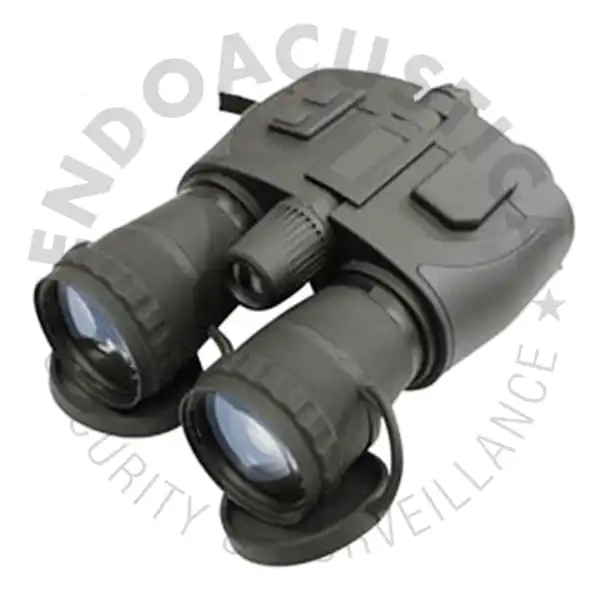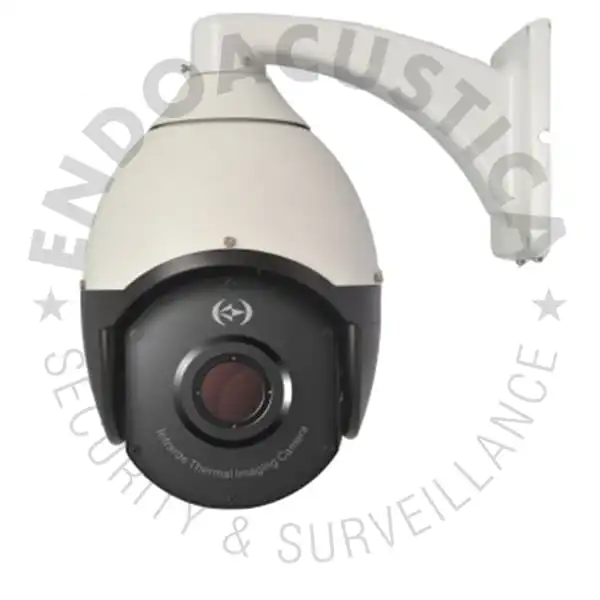Endoacustica offers, Exclusive Customer Service and free Training
Night vision goggles, thermal vision goggles, thermal imaging cameras
Electricity and light are both forms of energy. Converting one form into the other is possible and useful across different industry domains. Among them is the sector of night vision devices, whose operating principle is pretty straightforward: light is converted into electricity, which in turn undergoes an amplification process before being transformed back into light.
Night vision goggles or glasses, technically referred to as image intensifiers, pick up the small amounts of light present in naturally dark or darkened environments, and boost them accordingly, so as to help our eyes to perceive visual stimuli as effectively as possible.
Still, it goes without saying that, under very low-light conditions, image intensifiers cannot operate adequately. In a pitch black room, an image intensifier would be completely useless.
Under these circumstances, the alternative, go-to solution is to use a thermal vision goggles or thermal imaging camera. Instead of picking up the light reflected by objects, thermal imaging cameras focus on the heat that objects, both animate and inanimate, give off.
Generally speaking, living organisms are warmer than the dark surrounding environment they move about in, and this clearly applies to vehicles and cars, too. Hot objects emit infrared radiation from their surfaces, which is a form of energy similar to light but with different wavelength. It is relatively simple to build a camera that picks up infrared radiation and turns it into visible light: it works just like a digital camera, except for the fact that the image sensor (CMOS - CCD) reacts to infrared radiation rather than to light. Some types of infrared cameras employ a variety of colors to indicate objects of different temperatures, and are traditionally used to point out events such as heat changes in specific objects.
Electricity and light are both forms of energy. Converting one form into the other is possible and useful across different industry domains. Among them is the sector of night vision devices, whose operating principle is pretty straightforward: light is converted into electricity, which in turn undergoes an amplification process before being transformed back into light....
Night vision goggles or glasses, technically referred to as image intensifiers, pick up the small amounts of light present in naturally dark or darkened environments, and boost them accordingly, so as to help our eyes to perceive visual stimuli as effectively as possible.
Still, it goes without saying that, under very low-light conditions, image intensifiers cannot operate adequately. In a pitch black room, an image intensifier would be completely useless.
Under these circumstances, the alternative, go-to solution is to use a thermal vision goggles or thermal imaging camera. Instead of picking up the light reflected by objects, thermal imaging cameras focus on the heat that objects, both animate and inanimate, give off.
Generally speaking, living organisms are warmer than the dark surrounding environment they move about in, and this clearly applies to vehicles and cars, too. Hot objects emit infrared radiation from their surfaces, which is a form of energy similar to light but with different wavelength. It is relatively simple to build a camera that picks up infrared radiation and turns it into visible light: it works just like a digital camera, except for the fact that the image sensor (CMOS - CCD) reacts to infrared radiation rather than to light. Some types of infrared cameras employ a variety of colors to indicate objects of different temperatures, and are traditionally used to point out events such as heat changes in specific objects. Read More

Restricted sale

Military night vision goggles
The EN-GEN3 binocular goggles are one of the most used and field tested night vision devices available on the market today. These wearable glasses, suitable for seeing in the dark...

Night vision binoculars
EN-NVBR binoculars have been designed to be an affordable night vision tool, without having to compromise on quality or performance in night vision. The device allows tje user to observe...

Thermal night vision monocular
EN-MONO is a compact, lightweight and easy to use night vision monocular. It integrates a 5mW infrared illuminator, a protection system against explosions and exposure to excessive light...

CMOS monocle with auxiliary infrared light
The EN-MHM58 night monocle is ideal for hunting and more and it is able to work perfectly both day and night, even in total darkness. It also finds application in those operations conducted by special forces and...

Multifunction thermal binocular
The ENMH-900 night vision thermal binoculars are a type of ultra-high performance multifunctional portable reconnaissance devices integrating a thermal imaging system, visible...

Military grade thermal binocular
The EN6100-B night vision device is a next-generation thermal binocular, which takes high-tech thermal imaging surveillance one step further. It is a lightweight and rugged infrared...

Car thermal imaging camera
The ENMH-D is a compact thermal imaging camera for all types of vehicles, designed to ensure safe driving even on the darkest nights or during bad weather. The device, based on...

Car night vision camera
Car night camera with video recording system. 8-inch IPS display for optimized light transmission. Video files blocking in case of accident and 24/7 monitoring. Loop recording...

Thermal weapon sight
The EN-MHRS is a compact and lightweight multifunctional thermal sight featuring advanced non-film technology, high sensitivity, high refresh rate and extreme stability...

Night vision weapon laser sight
The EN-LRF weapon laser sight is a compact and lightweight multifunctional thermal viewfinder. With advanced infrared thermal imaging technology, high sensitivity, high frame...

Sniper detector and night vision system
The SNIPER-OPTIC device is a kind of laser active detection system that uses the "cat's eye" effect to locate a sniper by exploring and finding the scope of the viewfinder...

Speed-dome thermal camera
With the new thermal technology based on infrared, this thermal camera is the perfect solution for monitoring 24-24h, day and night. Equipped with an all-alloy housing, the camera...
A night vision device boosts visibility in dark or pitch black conditions through a few simple steps. Light is made up of photons (elementary particles of light) of different colors. Weak light in a dark environment hits the lens from the front. The photons then land on a light-sensitive surface, called a photocathode. The photocathode converts photons into electrons (tiny particles that carry electricity). The electrons go through a photomultiplier tube, which leads to a significant numerical increase, basically amplifying them. The next stop is a phosphor screen, by whose interaction the electrons recreate the original image. As a result, the increased number of photons exiting the photomultiplier produce a brighter version of the actual original picture.
When photons are converted into electrons, however, there is no way to preserve their original color, and the incoming light is therefore rendered in black and white, which is why a green phosphor screen is used, because the human eye is most sensitive to green light. Plus, it comes easier to us to look at green screens for long periods of time, rather than at black and white ones.
Some recently developed technologies use instead white phosphor screens. Night vision goggles with white phosphor crystals make it possible to achieve increased image quality, clarity and resolution compared to traditional green-phosphor-crystal night vision devices.
Night vision image intensifiers are conventionally divided into four generation categories, of which only the first two are available on the free market.
First-generation devices use one or three photomultiplier tubes, offer an intensification gain of around 1,000x, an average life cycle of close to 4,000 hours, and visibility of up to 150 meters (492 feet) for the most advanced models. Devices in this category are reasonably priced, with entry-level versions available for 150-200 euros (184-245 dollars).
Second-generation goggles boast instead an amplifier consisting of glass tubes (MCP), which results in superior resolution and therefore sharper images, with visibility of up to 600 meters. Their price range is pretty wide (1,000-3,000 euros / 1,226-3,680 dollars), depending on the type of scope.
Gallium arsenide technology for the photocathode and use of an ion filter film are the defining features of third-generation devices, which provide night vision goggles with a substantially longer life cycle compared to the first two generations, as well as intensification of up to 120,000x, and very high sensitivity to light.
Fourth-generation devices are not coated with the ion barrier film featured in third-generation ones, instead focusing heavily on image quality at the expense of quantity, in terms of life cycle of the image intensification tube. These devices deliver unmatched image clarity and visibility of over 1,000 meters (3,281 feet).
Use of optical devices in the last two generation categories is reserved exclusively for armed forces.